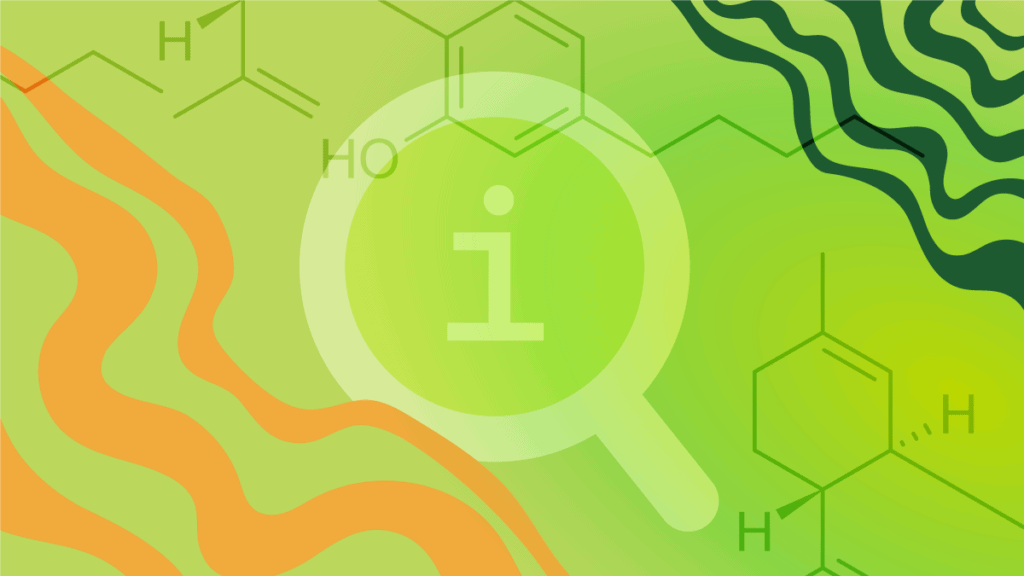- Dispensaries
-
Cultivars
By Cultivar Types
By Effects
By Terpenes
- Blog & Press
- About
- Products
Decoding THC: A Comprehensive Guide to Tetrahydrocannabinol
- Cenk Cetin
- February 29, 2024
- 10:01 am
- No Comments

Introduction
Tetrahydrocannabinol, or THC, is the molecule that gets you “high”. It’s a “psychoactive” compound, meaning it affects your mind, like alcohol, caffeine, tobacco but not CBD. Most cultures use some form of psychoactive substance, and altering your consciousness in some way looks like it’s a practice so common it’s not even exclusive to humans. THC has a great deal to offer with the proper use.
The history of cannabis use is as old as any medicinal practice with evidence of Chinese medical cannabis at the very least 2500 years ago. Despite being outlawed throughout the 20th and 21st centuries, millions of people consumed THC uninterrupted. Scientists also conducted world changing research with these restrictions still in place.
THC, as well as offering euphoria and relaxation, can help with a wide range of physical and mental problems. It is a strong substance so should always be used with due care, attention and knowledge. Learning the science and history of the substance is the safest way for people to navigate its properties and effects.
This article will start with a brief explanation of how THC is absorbed into the body, then we will look at the discovery of the molecule and the endocannabinoid system. Then we will look at the plethora of effects, uses and implications of THC, mental, physical and social. We will then look at the challenges and side effects faced before concluding.
Entourage Effect and Consuming THC
THC alone and its percentage only plays part of the role in the feeling a certain cultivar (strain) feels to consume. The entourage effect is the name given to the collective effects of the cannabinoids and terpenes because they have “co-activating agents that enhance the beneficial agents in phytocannabinoids in humans.” Therefore a lower percentage THC can have stronger effects with the right terpenes.
Raw cannabis actually contains the cannabinoid THCA or tetrahydrocannabinolic acid. When it is burned or heated it transforms into Delta-9 Tetrahydrocannabinol, this compound is what people actually experience the effects of when they smoke.
When producing edibles, THCA is “decarboxylated” into Delta-9 THC via a heating process before it is extracted from the plant fibers. With edibles, the cannabis is digested so it travels through the stomach into the liver which actually changes the Delta-9 THC into 11-Hydroxy THC. This new compound lasts longer, can feel different and actually be more potent than its smoked counterpart.
THC Discovery and Endocannabinoid System
Cannabis was used in many pharmacies to remedy pain and other ailments, in various forms, in the late 19th and early 20th centuries. The main active ingredient THC wasn’t actually isolated until 1964 when Israeli chemist Raphael Mechoulam experimented on some seized cannabis. At first, they did not know how THC enacted its effects. It wasn’t until 1988 that Mechoulam and his team developed techniques that facilitated the discovery of the endocannabinoid system.
The endocannabinoid system, or ECS, is one of the most influential systems in the body and is in fact millions of years old and present in nature in at least all mammals. “Endo” coming from the Greek “within” signifies the internal system of the body.
The ECS regulates many parts of our everyday functions of mind and body like mood, sleepiness, hunger and metabolism and energy levels. There are two parts of the ECS that are referred to by scientists as CB1 and CB2 that deal with, to simplify, the central and peripheral nervous system of a mammal respectively. The science suggests the ECS evolved in order to regulate chronic stress from external stimulus and strives to achieve ‘homeostasis’ – where all functions of the body are operating in balance with each other.
Endocannabinoids are naturally occurring in the body. The most well known one is Anandamide, or informally known as ‘the bliss molecule’ coming from the Sanskrit word for bliss “ananda”. It’s responsible for feelings of euphoria and pleasure you might receive from runners high, chocolate or anything ‘satisfying’. This is possible because the ESC is present in every cell in our bodies and operates communication and distribution of resources between them.
THC and CBD are what’s referred to as phytocannabinoids, with “phyto” being the Greek for “plant”. There are many phytocannabinoids and they all interact with the ECS in their own way. While CBD inhibits the breakdown of anandamide, (learn more here) THC actually mimics the shape and function of the endocannabinoid. This is why THC can create feelings of euphoria and relieve pain and inflammation. Too much THC or the wrong environment therefore can deregulate the ECS and cause anxiety and confusion.
Medical Impact of THC
Products containing THC can directly address diseases and conditions such as:
- Arthritis
- Psoriasis
- Crohn’s disease
- Multiple sclerosis
- PTSD
Some of the more serious medical uses of cannabis include treating Parkinsons by reducing tremors and anxiety and some suggest that cannabis also reduces the inflammation on the brain related to Alzheirmers disease. THC is also used to treat cancer patients in their recovery from chemotherapy by helping keep a good appetite as well as treating chronic pain.
Conditions with the nervous system are also very well suited to treatment with cannabis. Arthritis, psoriasis, chronic pain, PTSD as well as stress and overstimulation brought on by Autism and ADHD are all conditions where THC is powerful for treatment. These treatments are usually done with a ‘full spectrum’ product, meaning it contains CBD as well as THC and produces best results due to the entourage effect.
Full contact sports could also be made safer with cannabis. New research suggests that American Football players could have less concussions and therefore less long term brain injuries if they use cannabis as a pre-training or pre-game treatment. THC and other cannabinoids act as a neuro-protectorate for the neurons that would be traumatized by the intense physical impact to the skull and brain from full contact sports. Actually anyone exercising could benefit from cannabis as research is showing that the anti-inflammatory and analgesic (pain relieving) qualities aid recovery.
Personal and Social impact of THC
The effects of THC are an everyday part of millions of peoples lives all over the planet for a variety of reasons, some of which are more healthy than others. Cannabis is still used for spiritual purposes in many places with both traditional and modern wellness frameworks. From the national day of smoking hash in Nepal in devotion to Shiva, to the modern wellness clinics of Koh Samui, the plant never truly lost its revered devine status.
Modern cannabis use is usually not quite as deep, many people do consume at parties and social gatherings. Perhaps arguably spiritual on some occasions but social connections are now seen as critical to living a healthy life. Therefore using cannabis to socialize is at least healthy, given you don’t overdo it – which we will discuss later.
On the other end of the spectrum many people mainly smoke alone or just with their partner, where someone is on that spectrum will vary with personal disposition, THC tolerance or any other factor.
The argument to allow adults to self medicate is strengthened by the growing recognition of neurodivergence and PTSD. Many people consume to relax and unwind from the stimulation of the day, which to many is how they mitigate the overstimulation and stress that disproportionately affects people with ADHD, Autism and PTSD. The research suggests that cannabis helps counteract the dopamine deficiency and improve emotional regulation in these cases. This reduces the frequency of anger, overwhelm and panic attacks which protects the overall health of the individual.
Side Effects
During the mid to late 20th and early 21st centuries, THC and cannabis had a reputation for having deadly or maddening side effects. This was significantly at odds with the science of the majority of cases. Now we are generally confident in the benefits of the plant for some people, maintaining awareness that other people’s systems are not suitable for THC at all.
Overuse of anything can be harmful, particularly something as potent as THC. Many people overuse cannabis as an escape from trauma, like other analgesics like alcohol. Escape mechanisms can make us overly withdrawn and socially challenged. In some cases this can exacerbate the symptoms of depression, however this study suggests that there is no evidence cannabis causes depression and many cases where everyday users had less “somatic complaints” and an increased mood compared to non-users. The same cannot be said for alcohol, as this study mentions that alcohol in any quantity is likely to increase depression.
Evidently, each individual’s case is different, thus free, educated use of regulated cannabis for adults looks like the most beneficial arrangement for public health. This education is necessary for safety, especially for young people. Consuming THC at an early age can hinder brain development, and those predisposed to extreme psychological disorders are more at risk of having them exposed with overuse of cannabis.
Many people swear by cannabis as a sleep aid as the right strain can really feel like a sedative, however as discussed in this article, it’s not an exact science. Initially cannabis can help people sleep quicker and for longer, but with less REM sleep – the most restful form of sleep. Also, after a tolerance has been built, the sedative effects lesson and more has to be consumed. A potentially slippery slope as the withdrawal symptoms will dramatically increase insomnia. Again, something which will vary between people and requires individual best judgment to achieve best results.
Conclusions
THC is a very common psychoactive molecule. It’s a normal part of millions of peoples lives just as much as other psychoactive ingredients like caffeine, alcohol or nicotine. Although, none of those three examples boasts quite as many health benefits as THC and other cannabinoids.
In modern life and historically, THC can help fight life threatening diseases and control a wide spectrum of life altering or hindering conditions. It’s therefore no wonder that people rejected prohibition. Now more countries realize the dangers of prohibition, public safety and knowledge is on the rise.
For the consumer, education on their own personal preferences and relationship with cannabis can allow them to tend to their own needs with confidence, while maintaining an eagerness to be informed by professionals. The industry flagshipped by this single, pretty special molecule has the potential to bring a lot of good to a lot of people across the world if it is done with mutual respect between plant, consumer, business and government.
Sources:



